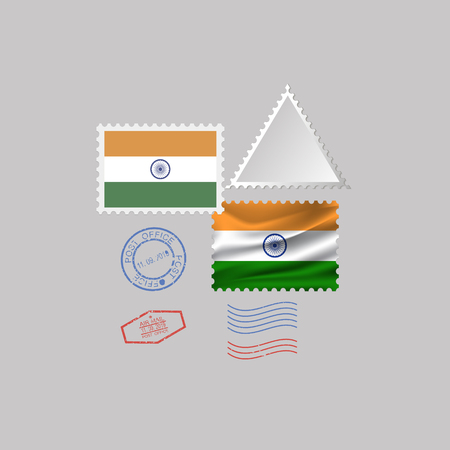1. Introduction: The Importance of Navratnas in Indian Culture
In the heart of Indian tradition, the Navratnas—nine celestial gemstones—hold a place of reverence and immense spiritual value. These sacred jewels, namely Ruby (Manikya), Pearl (Moti), Red Coral (Moonga), Emerald (Panna), Yellow Sapphire (Pukhraj), Diamond (Heera), Blue Sapphire (Neelam), Hessonite (Gomed), and Cat’s Eye (Lehsunia), are not merely ornamental treasures; they are believed to be vessels of divine energy as described in the ancient Vedic scriptures. According to Vedic astrology, each Navratna is associated with a specific planet, and together they form a harmonious cosmic balance that can influence one’s destiny and well-being. For centuries, kings, sages, and seekers have adorned these gems to attract auspiciousness, protect against malefic planetary influences, and elevate their spiritual journey. As per Shastra, the correct identification and use of pure Navratnas amplify their remedial powers manifold. Hence, understanding how to check the purity and authenticity of Navratnas in India is not just about investment or adornment—it is about aligning oneself with the cosmic rhythm for health, prosperity, and spiritual progress.
2. Recognising Genuine Navratnas: Traditional Insights
The ancient Indian tradition, rooted in the wisdom of the Vedas and Puranas, provides profound guidance for discerning the authenticity of Navratnas—nine sacred gemstones believed to channel cosmic energies and elevate spiritual wellbeing. Our rishis and astrologers have preserved time-honoured methods that blend scriptural authority with practical techniques, ensuring seekers can distinguish true Navratnas from imitations.
Scriptural Foundations and Ancient Texts
The Garuda Purana, Ratna Shastra, and Brihat Samhita are revered classics that detail qualities of each gemstone—its colour, luster, weight, clarity, and astrological significance. For example, these texts describe a flawless ruby (Manikya) as radiant like the rising sun, free from blemishes, with an even hue; while a genuine pearl (Moti) must be round, lustrous, and smooth to touch.
Traditional Local Testing Techniques
Across India’s diverse regions, families and gem traders use age-old tests passed down generations. These simple yet effective methods can be performed without advanced equipment:
| Gemstone | Traditional Test | Description |
|---|---|---|
| Ruby (Manikya) | Kanchuki Pariksha | Place on white cloth under sunlight; a pure ruby emits a reddish aura. |
| Pearl (Moti) | Dant Pariksha | Rub gently against teeth; genuine pearls feel gritty due to natural layers. |
| Sapphire (Neelam) | Dugdh Pariksha | Dip in milk; pure Neelam may not change milk’s colour or texture. |
| Coral (Moonga) | Pani Pariksha | Drop in water; real coral sinks quickly due to its density. |
Wisdom from Gem Dealers and Family Elders
Elderly jewellers across Rajasthan, Gujarat, Tamil Nadu, and Bengal still recite couplets or verses describing what to look for when choosing each stone. For instance, “Heera bina daag ka shubh” (a diamond without flaw is auspicious) is a maxim repeated during selection. In traditional Indian homes, elders advise examining stones under natural sunlight at dawn or dusk—the most sattvic times—to perceive their true aura and vibrancy.
Conclusion: The Interplay of Science and Spirituality
While modern gemology employs laboratory instruments, India’s classical techniques honour both material science and metaphysical properties. By following these ancient insights and local practices, you embrace not just authenticity but also the blessings embedded within each Navratna as prescribed by our timeless heritage.

3. Physical Examination: The Art of Observing the Gemstones
In the sacred lands of Bharat, where Navratnas are revered as carriers of cosmic energy and spiritual significance, the physical examination of each gem is a ritual deeply rooted in tradition. Every seeker and jeweller must become an astute observer, for the eyes are the first tools in unveiling the truth behind these celestial stones.
Surface Features: Tracing Nature’s Handiwork
The surface of an authentic Navratna gemstone will speak volumes. Look for natural growth marks, slight irregularities, and minor blemishes—these are often signs that Mother Earth herself has crafted the stone. In contrast, synthetic or imitation gems might appear unnaturally flawless, lacking those subtle traces left by time and nature.
Colour: The Dance of Divine Hues
Each Navratna possesses its unique colour vibration, whether it is the deep blue of Neelam (Blue Sapphire) or the fiery red of Manikya (Ruby). Observe the intensity, uniformity, and saturation of colour under good natural light or a jeweller’s lamp. Genuine stones usually exhibit a rich yet balanced hue, never appearing overly bright or faded—an important distinction understood by Indian gem connoisseurs for centuries.
Transparency & Luster: Clarity Born from Purity
The transparency of the gemstone should be assessed with both naked eye and magnification tools such as a 10x loupe—a staple in every Indian jeweller’s kit. Natural Navratnas display a certain internal clarity but may have inclusions or tiny fissures within. Their luster should be vibrant yet soft, never glassy or dull. Beware of stones that seem too perfect; such perfection may mask artificial treatments.
Natural Inclusions: The Signature of Authenticity
Indian gemological wisdom teaches us to embrace inclusions as nature’s signature—delicate veils, minute crystals, or feather-like patterns visible inside the stone. These inclusions do not mar the beauty but rather validate authenticity. Fake stones often lack this inner world, instead showing bubbles or unnatural patterns indicative of glass imitations.
Jeweller’s Tools: Enhancing Traditional Observation
While tradition values observation by the naked eye, modern Indian jewellers employ tools such as hand-held loupes, microscopes, and ultraviolet lamps to further scrutinise gemstones. Each tool reveals another layer of truth—enabling you to distinguish between natural purity and deceptive artifice with confidence and reverence.
This ancient art of physical examination weaves together intuition and technique, empowering every devotee and connoisseur to honour Navratnas in their truest form—a practice echoing through generations across India’s sacred soil.
4. Scientific Certification: Trustworthy Practices in the Indian Market
When seeking to ascertain the true purity and authenticity of Navratnas, the wisdom of tradition meets the rigor of science. In India, renowned gemological laboratories and certification bodies provide a sacred shield against counterfeit stones, ensuring that seekers receive only what is genuine and auspicious. Let us journey through the trusted practices and institutions that safeguard your spiritual investment.
Respected Gemological Labs in India
India is blessed with a constellation of respected gem-testing laboratories, each upholding international standards while honouring local traditions. These labs employ advanced scientific instruments such as spectrometers, microscopes, and refractometers to assess each gem’s origin, composition, and treatment history. The following table offers a glimpse into some of India’s most reliable certification authorities:
| Certification Body | Location | Notable Features |
|---|---|---|
| Gemmological Institute of India (GII) | Mumbai | Pioneer in gemstone testing; ISO certified; traditional & advanced analysis |
| International Gemological Institute (IGI) | Multiple Cities | Global presence; transparent grading reports; widely accepted certificates |
| Bharat Diamond Bourse Lab (BDBL) | Mumbai | Specialised for diamonds and colored stones; high accuracy protocols |
| Gem Testing Laboratory, Jaipur (GTL) | Jaipur | Govt. recognized; deep expertise in colored gemstones and Navratnas |
The Significance of Hallmarks and Certification Seals
A hallmark or laboratory seal functions as a modern-day yantra—an emblem of trust sanctified by science. Always insist on Navratna jewelry that bears a distinct laser inscription or tamper-proof certificate number. This ensures traceability and authenticity beyond verbal assurances or shopkeeper’s blessings.
How to Interpret Authentic Lab Reports
- Description: The report must clearly mention the type and quality of each stone in the Navratna set (Ruby, Pearl, Red Coral, Emerald, Yellow Sapphire, Diamond, Blue Sapphire, Hessonite, Cat’s Eye).
- Origin: Many reports specify whether the stones are natural or synthetic—a crucial distinction for Vedic purposes.
- Treatment Disclosure: Check for any signs of artificial enhancements such as heating or dyeing; for pure astrological benefit, untreated gems are preferred.
- Photograph & Report Number: Match the physical stone with the high-resolution photograph on the certificate and verify the unique report number on the official lab website.
- Date & Signature: Genuine reports carry an issue date and are signed by qualified gemologists—never accept unsigned documents.
Navigating the Indian Marketplace with Confidence
The road to authentic Navratnas is illuminated by knowledge and vigilance. Approach only those sellers who willingly present scientific certifications from esteemed Indian labs. Interpret these sacred documents with discernment—let them be your guiding mantra towards purity, prosperity, and planetary harmony.
5. Beware of Imitations: Common Tricks in Local Bazaars
The Indian bazaar, vibrant and bustling with the echoes of ancient trade, is both a treasure trove and a labyrinth of deception when it comes to Navratnas. While the genuine nine gems are revered for their cosmic energies and Vedic significance, the market is replete with clever imitations that can bewilder even the seasoned connoisseur.
Prevalent Adulterations and Enhancements
Among the most common tricks is the practice of adulteration—mixing genuine stones with look-alike glass, colored quartz, or low-grade substitutes. Heat treatments and dyeing are routinely used to enhance color and clarity, masking flaws that would otherwise lower the gems value. For instance, rubies may be lead-filled to conceal cracks, while emeralds are often oiled to intensify their hue.
Synthetic Substitutes
With advancements in technology, synthetic Navratnas—laboratory-created stones—are increasingly indistinguishable from natural ones to the untrained eye. Dealers might pass off these simulants as authentic, especially in crowded markets where verification tools are absent. Cubic zirconia replaces diamonds, synthetic cat’s eye mimics chrysoberyl, and corundum stands in for precious sapphires.
Guidance on Safeguarding Yourself
To shield oneself from such deceit, always demand certification from reputed gemological laboratories recognized by Indian authorities like IGI or GIA. Insist on written guarantees regarding origin and treatment disclosures. Avoid purchasing from itinerant vendors or stalls lacking proper documentation. Trust only those sellers who exhibit transparency in their dealings and allow independent verification of their wares. In this sacred land where gems are more than mere ornaments but carriers of destiny, let discernment guide you, as prescribed in Vedic wisdom: “Let truth be thy shield; let knowledge be thy sword.”
6. Consulting an Expert: The Vaidik and Astrological Perspectives
When embarking upon the sacred journey of acquiring Navratnas, it is not only material purity that matters but also the alignment with cosmic energies. In the Indian tradition, consulting a certified gemologist ensures that the gems are free from flaws (doshas) and possess genuine quality as per Shastric standards. However, the ancient wisdom of Bharat goes further: one must also approach a knowledgeable Jyotish Acharya—an expert in Vedic astrology.
The Jyotish Acharya, who is well-versed in the science of planetary influences, can ascertain whether a particular Navratna suits your unique janma-kundali (birth chart). Their guidance can help discern if the gem will enhance auspicious energies or cause disharmony. This step is vital because even a pure stone, if not astrologically aligned, may not yield the intended punya (merit) or phala (fruit).
Furthermore, in the Indian ethos, the touch or blessing of a punya-purusha—a person endowed with spiritual merit—is believed to sanctify the Navratnas further. This ancient practice is rooted in the belief that spiritual vibrations, when transmitted through a realized being’s touch or mantra, purify subtle energies within the gem.
Therefore, before adorning oneself with these celestial gifts, seek both scientific validation and Vaidik wisdom. Approach only those experts who are recognized by reputed institutions or lineage traditions, and request their blessings on your chosen Navratnas. By doing so, you ensure that your gems carry both terrestrial authenticity and divine sanction—a true union of prakriti (nature) and purusha (spirit).
7. Conclusion: A Path to Purity and Spiritual Well-being
In the sacred journey of acquiring Navratnas, seekers in India are called to blend the discerning vision of modern science with the profound heritage of Vedic wisdom. Authenticity is not a mere label—it is a harmony between the gem’s physical purity, as verified through laboratory certification and expert examination, and its spiritual resonance, as revealed by astrological tradition and ritual sanctification. By respecting both the empirical methods—such as spectroscopy, refractive index testing, and certification from trusted Indian gemological institutes—and the time-honoured customs of our ancestors, you ensure your Navratnas carry not just material value but auspicious energy.
This holistic approach honours the teachings of our Rishis, who taught that every gemstone possesses a unique vibration aligned with cosmic forces. When you seek both scientific verification and consult learned astrologers or pandits for spiritual suitability, you invite blessings of health, prosperity, and inner peace into your life. Let your quest for Navratnas be guided by discernment, reverence, and an open heart—thus ensuring that these nine sacred gems become true instruments of well-being on your path of dharma.


